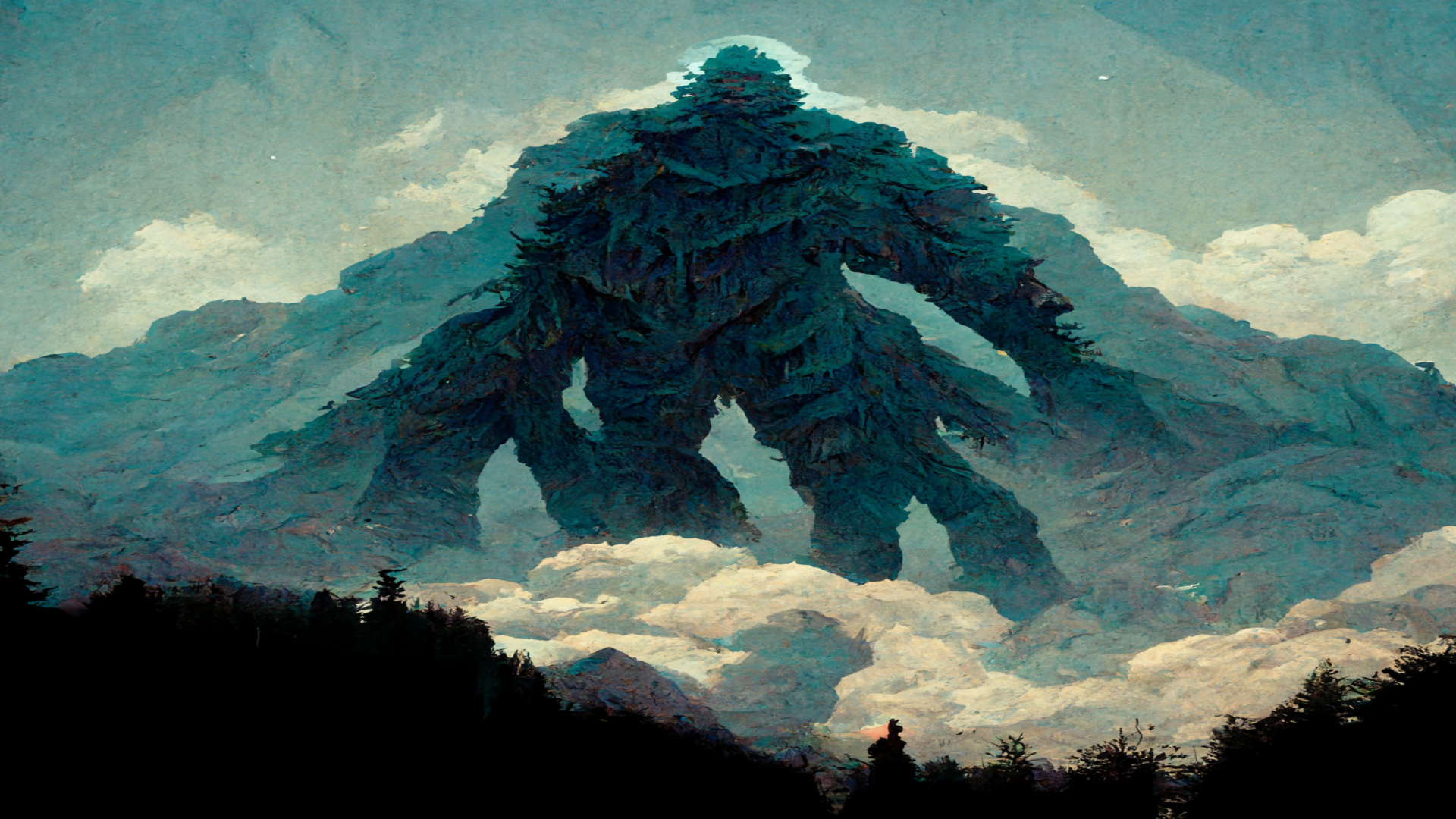The Jackson County Giant
Today I want to take you back to 1877. The place is Jackson County, Alabama. Founded just 58 years before, this mountainous, unforgiving and remote terrain was mainly settled by subsistence farmers at the time.
On the 17th of July, 1877, The Montgomery Weekly Advertiser published a story. A very strange story. Allegedly, a creature known as the Jackson County giant was caught alive by a crowd of 300 men before managing to escape. Never to be seen again. You can read the original news clipping here.
Encounter and Capture
On their return from a fishing trip near Bellefonte (now a ghost town), Colonel John Snodgrass and Dr. Payne discover tracks made by a human, but one so utterly large they could not believe their eyes. Upon their return to Scottsboro, they convinced Reverend R.D. Shook, the editor of the Philanthropist to go back out with them and at least make a report of the giants tracks. He does so, taking a tape measure with him. Upon their return, the story is corroborated.
The whole town of Scottsboro are soon talking about the giant. Fear reigns supreme. Very quickly everyone is in agreement. The Jackson County Giant must be hunted down.
A party of 300 men and around 450 dogs is raised. Led by Col Snodgrass, the original discoverer of the giants tracks. After some searching, Col. Snodgrass locates the giant through his spy-glass and announces that the giant resides in a cove on the mountain.
The story goes that the giant was found sleeping next to a stream. By all accounts he had been eating, surround by bones and animal horns. The party dash forwards, ropes in hand, dogs at their heels, ready to capture him. The giant, upon hearing the noise, awakens. Panicked, he leaps to his feet, ready to fight. The men and dogs are wary to move within reach of the giant so with yelping and whooping, try to scare him into a chase to tire him out.
Terrified and no doubt a little groggy still, the giant grabs a few of the braver dogs and throws them at the men on horseback, although no-one is mortally wounded according to the report.
The giant then bolts for the mountains and runs up a ravine, with the dogs and men hot on his heels. As the ravine narrows, in his panic he gets “wedged fast” and cannot move. The party rope him and with a “herculean effort he is dragged forth and taken to an open glade”.
Once caught, a man known only as Col Alex joins the crowd and is heard to exclaim “Boys, haven’t we done a glorious mornings work?”.
Jackson Country Giant Description
Tied and now pliant, the Jackson County Giant is meticulously measured.
Standing 21’3 feet tall (that’s a whopping 649.2 cm!) the giant is said to have measurements as follows:
- 6 feet 8 inches across the shoulders (203.2 cm).
- Arms 7 feet 9 inches long (236.22 cm).
- Fingers 14 inches long (35.56 cm).
- Head the size of a flour barrel.
- Space between his eyes is 9 and a half inches (24.13 cm).
- Nails on fingers and toes are like claws and measure 4 inches (10 cm).
- With a 6 feet long beard (182 cm).
The giants eyes are described as opening perpendicularly rather than horizontally with eyeballs the size of cantaloupes that are striped red and green. His mouth is triangular shaped with tusks protruding from it. His complexion is described as somewhere between “pea-green and sky-blue”. Some of the men speculate that he is related to the “gurrillas” (sic).
Discussion and Escape
Measurements taken and with everyone having seen the “monster”, the discussion turns to what to do with him now they have caught him. As the newspaper report puts it, “A knotty question indeed!”.
However, not long into the discussion, the giant has regained his strength and composure. He snaps the ropes “like so many threads”, leaps over 40 men and crosses the river. The Jackson County Giant is last seen heading into the Sand Mountains. Neither the men nor the dogs show any appetite to chase him again.
In the original newspaper report, the giant is referred to as a species of “Brobdignag” (sic). This refers to a race of giants called the Brobdingnag in the book Gulliver’s Travels by Jonathan Swift. Published in 1726, the Brobdingnagians are soon used by the wider public to mean anything of unusually large size and so this probably does not mean a sincere belief that they actually believed the giant to be of that race. It’s more of a descriptive word used for their audience.
